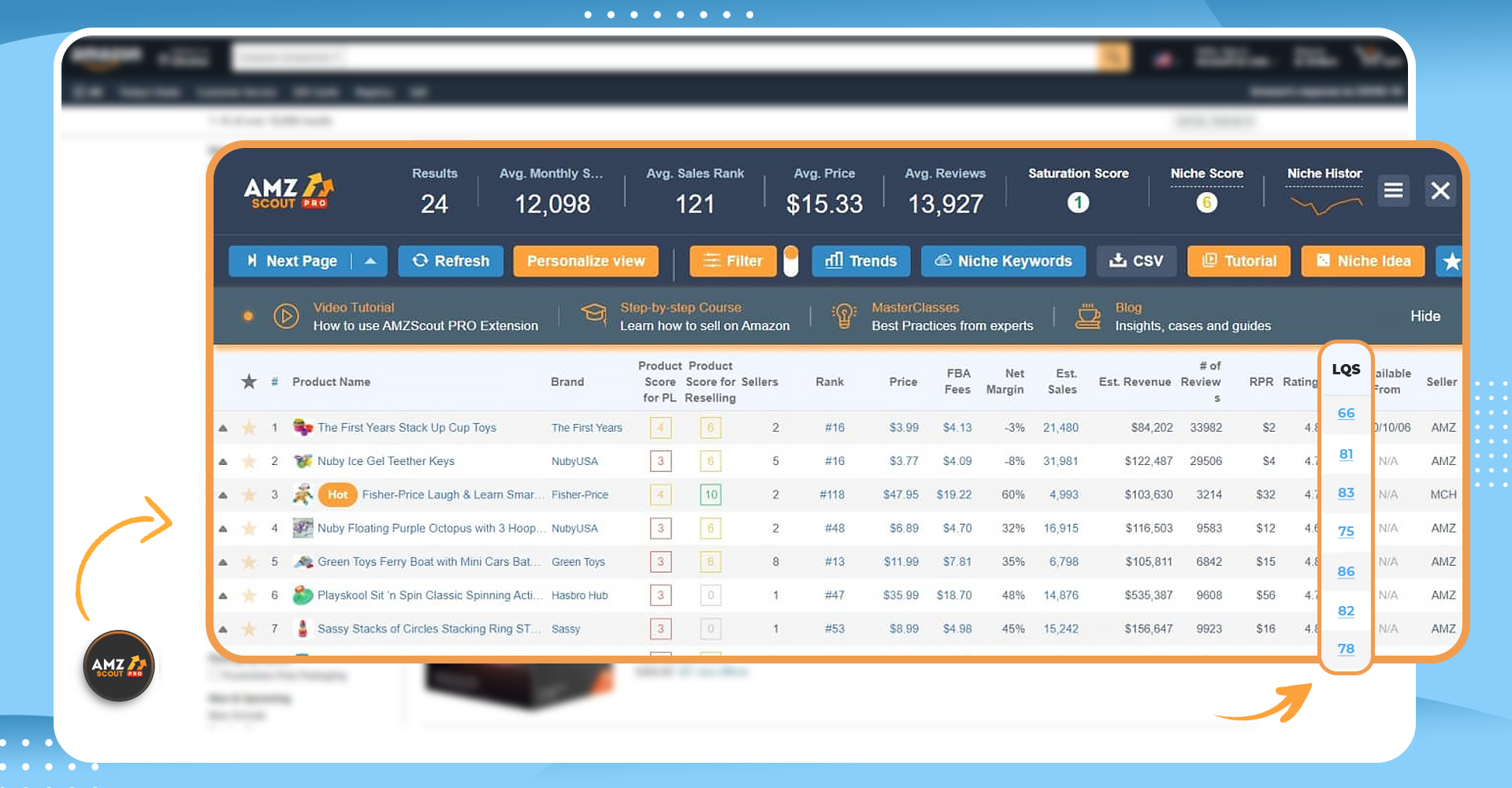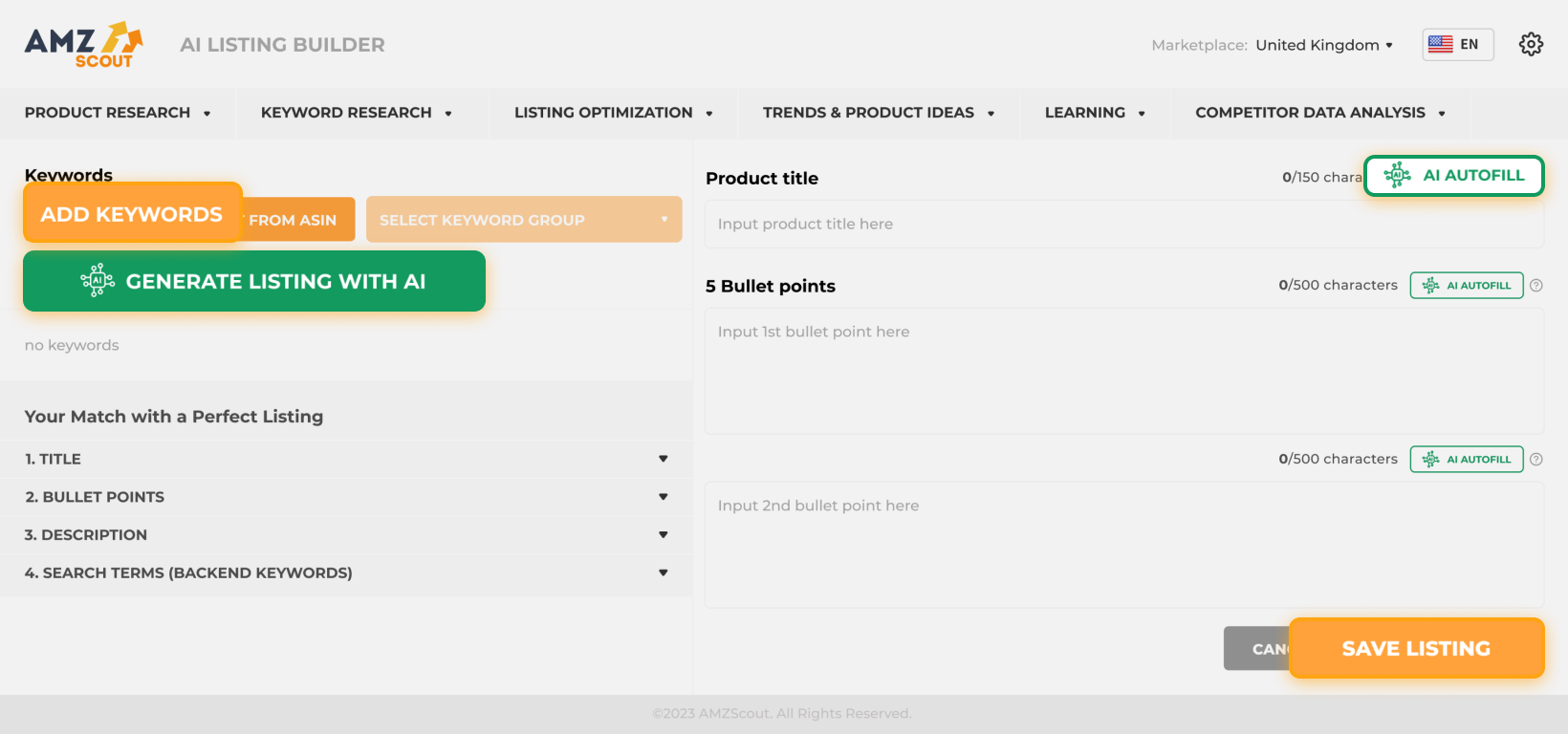
10 Powerful Tips for Selling on Amazon Like a Pro
Breaking into the world of selling on Amazon is like embarking on a high-stakes adventure. To truly thrive on this platform, you need to go beyond the basics and utilize advanced techniques that can elevate your business. This requires not only hard work but also in-depth market research, a well-honed strategy, and keeping a keen eye on ever-changing industry trends.
In this article, we’re moving beyond the usual tips for selling on Amazon (like registering for an account or searching for a product), and diving deep into the finer points that often go unnoticed. Whether you're aiming to achieve a higher profit margin, increased visibility, or stronger customer engagement, these strategies will help you stay ahead of the curve.
Introducing 10 Enhanced Amazon Selling Tips
If you're ready to take your Amazon business to the next level, keep reading as we explore subtle yet powerful Amazon seller tips and tricks that can lead to long-term success.
1. Dive into Niche Marketplaces
While it’s tempting to go after popular, broad categories on Amazon, diving into niche markets can be far more rewarding. By targeting specific, underserved segments, you face less competition and have a stronger chance of building a loyal customer base. Niche products often yield higher profit margins because they cater to specialized needs. The key is to conduct thorough research to help you identify emerging trends or gaps within a particular niche.
For example, consider the niche market for ‘eco yoga mats’. Unlike standard yoga mats, these mats are made from sustainable, non-toxic materials that appeal to health-conscious and environmentally aware consumers.
By focusing on this niche, sellers can differentiate themselves from generic options and attract customers who prioritize eco-friendly products. This specialization not only reduces competition, but also builds brand loyalty among yoga practitioners who are committed to sustainable living.
2. Create a Unique Selling Proposition (USP)
Your ‘Unique Selling Proposition’ (USP) is what sets you apart from the sea of competitors on Amazon. It’s not enough to simply list a product—you also need to clearly communicate what makes your product better, different, or more valuable than others.
Whether it’s superior quality, innovative features, or unmatched customer service, your USP should resonate with your target audience. Think carefully about the unique benefits of your product, and weave those points into your product title, description, and imagery.
3. Monitor Competitor Activity
Staying ahead of the competition is crucial for long-term success. Monitor what your competitors are doing—whether it’s pricing strategies, customer reviews, or listing updates—and adapt accordingly. Tools like the AMZScout PRO Extension can track competitor activity, providing valuable insights into their pricing changes, sales volumes, and promotional tactics.
By keeping a close eye on the competition, you can adjust your strategies to stay competitive or even outsmart them with better offerings. Let's see how to use the AMZScout PRO Extension to track your competitors:
Step 1: Install the AMZScout PRO Extension. Visit the Chrome Web Store, search for AMZScout PRO, and click Add to Chrome. Once installed, you’ll see the AMZScout icon in your browser toolbar. You can also sign in using your AMZScout account, or create one if you don’t have one yet (which is transparently free, by the way).
Step 2: Search for your competitors’ products. Navigate to Amazon and search for a product in your niche or the specific competitor you want to track. The tool will automatically begin analyzing the product listings on the search results page.
Step 3: Open the AMZScout PRO dashboard. Click on the AMZScout PRO icon in your browser toolbar to open the dashboard.
Step 4: Analyze pricing and sales data. In the AMZScout PRO dashboard, focus on the following columns for competitor tracking:
Sales Volume: Review how many units your competitors are selling monthly. This helps you identify top-performing products.
Pricing: Compare prices to ensure that your product is priced competitively. If your competitor lowers their price, you can adjust your own accordingly.
Listing Quality Score (LQS): Pay attention to the LQS, which is especially relevant for Private Label products. A higher LQS indicates a well-optimized listing, which can enhance visibility and conversion rates. Analyzing the LQS of your competitors can provide insights into areas where you can improve your own listings to compete more effectively in the market.
Step 5: Track historical trends. Click on the Product History icon on the dashboard to see trends in pricing, sales, and rank. This helps you spot patterns and plan your own promotions or pricing adjustments in response to market shifts.
Step 6: Export and analyze data. For in-depth analysis, export your competitor data into a CSV file. This allows you to organize, filter, and review trends over a longer period of time. You can create comparison reports to assess how your competitors are evolving and what tactics they’re using to succeed.
Staying ahead of the competition on Amazon requires actively monitoring competitor activity and adjusting your strategy based on their moves. With the AMZScout PRO Extension, you can easily track key metrics such as sales volume, pricing, and revenue in real time. This tool helps you respond proactively to market shifts, ensuring that your business remains agile and profitable in the constantly changing Amazon marketplace.
4. Set Competitive Pricing
Pricing can make or break your success on Amazon. You need to strike a balance between being competitive and maintaining a healthy profit margin. Analyze market prices and competitor rates regularly to ensure that you’re neither overpricing nor underpricing your products.
While there are a bunch of pricing strategies available, the following techniques are believed to be the most effective ones:
Dynamic Pricing: Use tools that automatically adjust your prices in real-time based on competitor pricing, market demand, and inventory levels. This strategy ensures that your products remain competitively priced without manual intervention. For example, when demand increases, your prices can rise to maximize your profits, or they can drop during slower periods to help boost sales.
Psychological Pricing: Implement pricing strategies like $19.99 instead of $20 to create the perception of a lower cost. This small difference often triggers a subconscious response, making buyers feel like they’re getting a better deal. Consumers are more likely to associate prices ending in ".99" with value, even when the savings are minimal.
Bundle Pricing: Encourage customers to buy more by offering discounts on bundled products, combining items that complement each other. For instance, selling a set of related items like a phone case with a screen protector at a reduced price encourages higher average order values. Bundling not only drives more sales but also helps move less popular products when paired with high-demand ones.
By employing these strategies, you can effectively navigate the competitive landscape on Amazon, maximize your sales, and maintain a healthy profit margin.
5. Optimize Your Listings
An optimized listing is the cornerstone of Amazon selling success. This involves using high-quality images, compelling product descriptions, and strategically placed keywords to improve search rankings and conversion rates.
Tools like AMZScout’s AI Listing Builder can help streamline this process by providing data-driven suggestions for keyword optimization and layout improvements. A well-optimized SEO listing not only attracts more traffic but also encourages higher conversion rates, ultimately boosting your bottom line.
Here’s a quick guide for using the AMZScout AI Listing Builder:
Step 1: Open the tool. Launch the AI Listing Builder on your platform.
Step 2: Type in your keywords or upload them from competitors. Enter relevant keywords or upload a list of keywords from your competitors’ ASINs.
Step 3: Click Generate. Hit the Generate button to create optimized listing content.
Step 4: Evaluate and refine your text. Review the generated content and make improvements as needed to ensure that it aligns with your brand and messaging.
By following these steps, you can create compelling and effective product listings quickly!
6. Utilize Amazon FBA Tips
Fulfillment by Amazon (FBA) is a powerful option for sellers looking to enhance their operational efficiency.
Here are the key benefits of using Fulfillment by Amazon (FBA):
Streamlined Operations: Amazon handles all aspects of storage, shipping, and customer service, allowing you to focus on strategic business growth.
Prime Eligibility: FBA products can offer Prime shipping, which significantly increases sales potential by building customer trust through faster delivery.
Increased Credibility: Selling through FBA can enhance your brand's credibility, as customers typically trust Amazon's fulfillment process.
Higher Sales Potential: The combination of Prime eligibility and Amazon's reputation can lead to increased sales.
Cost vs. Convenience: While FBA does incur fees, the convenience and credibility gained tend to outweigh the costs, making it a worthwhile investment for many sellers.
In summary, Fulfillment by Amazon (FBA) offers a range of benefits that can significantly boost the efficiency and sales potential of your business. By leveraging Amazon's logistics and customer service expertise, sellers can focus on growth and establish a strong brand presence in a competitive marketplace.


7. Encourage Reviews
Customer reviews are one of the most powerful ways of building trust and increasing conversion rates on Amazon. After customers make a purchase, encourage them to leave honest feedback about their experience. Positive reviews not only enhance your product's credibility, but also improve your search ranking within Amazon’s algorithm.
8. Create Bundles
Product bundling is a clever strategy to increase your average order value and differentiate your listing from competitors. By offering related products together at a slightly discounted rate, you provide more value to the customer while simultaneously driving up sales.
For example, if you’re selling a yoga mat, bundling it with a yoga block or towel can encourage customers to spend more. Bundles also stand out among search results, attracting attention in crowded categories.
9. Monitor Performance Metrics
Keeping track of your performance metrics is crucial for optimizing your business and spotting potential issues before they become problems. Review metrics such as conversion rates, return rates, and customer feedback regularly to identify areas for improvement. Amazon Seller Central provides comprehensive data on these key metrics.
10. Build a Brand and Register It
To stand out on Amazon, you need more than just a good product—you need a recognizable brand. Building a brand fosters customer loyalty. Besides, registering your own label means reducing the competition, as you become the only seller on the listing.
Once your brand is established, register it with the ‘Amazon Brand Registry’ to unlock powerful features like enhanced brand content, reporting tools, and protection against counterfeiters. This will give you greater control over your listings and allow you to create a more cohesive brand presence on Amazon.
Conclusion
Mastering the art of selling on Amazon requires more than just following the basics; you also need to implement advanced strategies that set you apart from the competition. By exploring niche markets, creating a compelling unique selling proposition (USP), optimizing your listings, and utilizing specialized tools like AMZScout PRO, you can maximize your success.
Staying informed about market trends and customer preferences is crucial for adapting your approach. Additionally, focusing on customer engagement and delivering exceptional service will help cultivate loyalty and drive repeat business. With these tips in hand, you’ll be well-equipped to grow your Amazon business and achieve long-term profitability.












